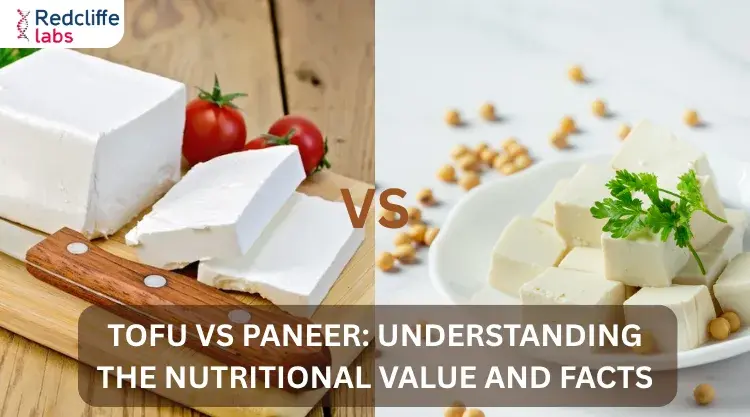Rajma Benefits: Types, Nutritional Value, & Side Effects

Medically Reviewed By
Prof. Ashok Rattan
Written By Muskan Taneja
on Sep 25, 2024
Last Edit Made By Muskan Taneja
on Jul 19, 2025

When you hear the word ‘Rajma,’ what comes to mind? Freshly home-cooked warm rajma rice. Rajma or kidney beans, also known as Phaseolus Vulgaris, are very common. Rajma is a stable Indian food; however, it is a legume native to Mexico and Central America. This kidney-shaped rajma benefits overall health. However, there are potential downsides to rajma. Today, we will explore rajma benefits, nutritional value, types, and possible side effects.
Types of Rajma
Rajma is a popular legume in Indian households. They are an essential part of a plant-based diet for vegetarians and vegans. Kidney beans are rich in protein, promoting digestive health, managing weight, and controlling blood sugar levels. There are varieties of rajma that are rich in nutrition that you can purchase. These are:
- Harsil Rajma
- Joshimath Rajma
- Bhaderwah Rajma
- Marwah Rajma
- Munsiyari Rajma
- Red Rajma
- Kashmiri thull Rajma
Harsil Rajma—These are rajma beans cultivated in Harshil, Uttarakhand (a village in the Garhwal region). They are medium—or large-sized rajma beans with a red and white color. Harshil rajma needs the least amount of soaking, is low in cholesterol, and is high in fiber and minerals.
Joshimath Rajma—Joshimath Rajma is grown in Joshimath, Uttarakhand. Farmers cultivate it because of the unique growing conditions at high altitudes, with pure glacier water. It is deep red or maroon, with the right amount of protein and dietary fibers that help manage weight and blood sugar levels.
Bhaderwah Rajma—This is a type of rajma grown in the Bhaderwah Valley of Jammu and Kashmir. It is a medium-sized bean that comes in various shades of red. This rajma is rich in vitamins and minerals that build immunity and boost metabolism.
Marwah Rajma—This variety of red rajma benefits from iron deficiency. Marwah rajma is grown in Marwah, Jammu and Kashmir. It has a delightful, deep, nutty flavor that is unique and flavorful.
Munsiyari Rajma- Munsiyari rajma, by its name, shows that it is grown in the Munsiyari region of Uttarakhand. They are medium in size and light red in color. They are rich in folate, magnesium, and potassium.
Red Rajma—Red rajma is a popular variety of rajma, mostly found in our kitchen. It is rich in fiber, complex carbohydrates, and magnesium. The fiber content in red rajma benefits digestion and prevents heart disease.
Kashmiri Thull Rajma—The Kashmiri cranberry bean, or Kashmiri thull rajma, is native to the Kashmir region of India. It resembles tiny spotted eggs and is a different maroon color. It is rich in protein, fiber, calcium, vitamin B6, and zinc.
Rajma Nutritional Value per 100g
One strength of rajma is its nutritional value. Kidney beans' nutritional value benefits muscle building, weight loss, diabetes, cardiovascular health, bone health, and gut health. Here is Rajma's nutritional value per 100g.
G-gram, mg- micrograms, kcal- kilocalorie
| Nutrient | Amount Per 100g |
| Calories | 127 kcal |
| Protein | 8.7g |
| Carbohydrates | 22.8g |
| Dietary Fiber | 6.4g |
| Sugar | 0.3g |
| Fat | 0.5g |
| Water | 67g |
| Omega-3 Fatty Acids | 30.17g |
| Iron | 2.9 mg |
| Magnesium | 45 mg |
| Potassium | 403 mg |
| Manganese | 0.2 mg |
8 Health Benefits of Rajma
There are various types of rajma, and each contains nutrients that benefit overall health. Kidney beans are filled with vitamins, minerals, fiber, carbohydrates, protein, and many bioactive plant compounds. They provide ten health benefits of rajma. Let’s understand them.
1. Rajma Helps in Managing Weight
Rajma contains complex carbs with low GI that can curb cravings. It provides energy, protein, and muscle strength to keep your body going.
If you are health-conscious or on a weight-loss journey, you can satisfy your cravings with a small bowl of rajma or by preparing rajma chaat or rajma salad.
2. Rajma Can Keep Your Bone Strong
This is kind of rare, but rajma can keep your bones strong. They contain calcium, which helps maintain bone health.
Calcium deficiency can make your bones weak. Adding rajma to your diet can help you regain calcium and improve bone health.
3. Rajma Can Improve Digestive Health
Several myths surround rajma, such as bloating and feeling lethargic. However, consuming rajma in a moderate amount can help improve digestive health.
Rajma contains dietary fiber, protein, and antioxidants that help slow digestion. However, over-consuming it can create a heavy feeling.
4. Rajma Benefits Your Skin
Rajma's benefits for health and skin have yet to be discovered. It contains folic acid, making rajma benefit your skin.
Folic acid in rajma helps delay aging, wrinkles, dullness, and skin infections.
5. Rajma Assists in Treating Arthritis
Inflammation in the joints causes arthritis, which shows a lack of copper in the body. Rajma treats arthritis by increasing the presence of copper in the body.
The copper content fights against arthritis. If you have joint pain or arthritis, add rajma to your daily diet.
6. Rajma Helps in Reducing Risks of High Cholesterol
Rajma contains dietary fiber, which prevents the risk of high cholesterol. Its low GI content also aids in cardiovascular health.
Studies show that soluble fiber in rajma can remove HDL (bad) cholesterol and increase good cholesterol levels.
7. Rajma May Assists in Managing Blood Pressure
Rajma is high in Potassium, which may lower blood pressure levels. Its fiber content can help improve overall cardiovascular health by improving blood flow and reducing cholesterol levels.
The high potassium content helps reduce sodium, which can relax blood vessel walls and lower blood pressure.
8. Rajma is Good For Diabeteic Patient
Diabetes comes with a plethora of restrictions. Cutting on sugar is one major thing. But that’s not the case with Rajma.
Rajma has several properties that make it an excellent food for diabetes patients. It is low in glycaemic index and contains complex carbohydrates, which prevent a rapid increase in blood sugar levels.
Also, read https://redcliffelabs.com/myhealth/food-creative/organic-food-should-you-prefer-it/
Side-Effects of Rajma
Kidney beans or rajma contain many nutrients and offer numerous health benefits. However, consuming them in a moderate amount is necessary to have effective benefits because if not, then it may lead to:
- Digestive issues
- Rajma contains certain anti-nutrients that may disturb the absorption.
- It may cause allergic reactions.
- It may lead to kidney stones because of its oxalate content.
Key Takeaways
Rajma contains several nutrients, including fiber, protein, vitamins, and minerals, that provide immersive health benefits. Eating in moderate amounts can provide essential health benefits. Also, the right amount can help avoid potential side effects such as digestive issues and allergic reactions. You can prepare rajma chaat and rajma salad to provide benefits. Moderate and proper preparation is key to adding rajma benefits to your diet.



